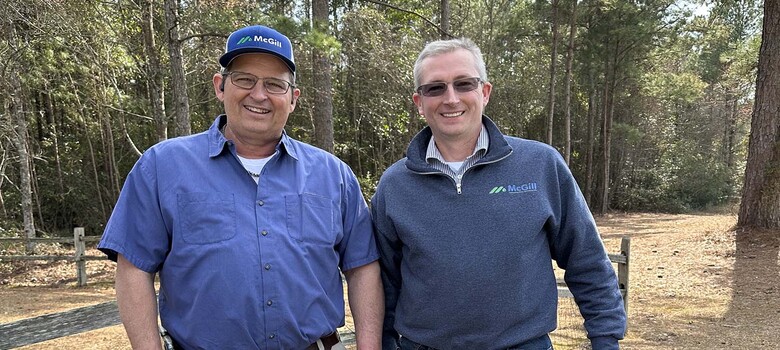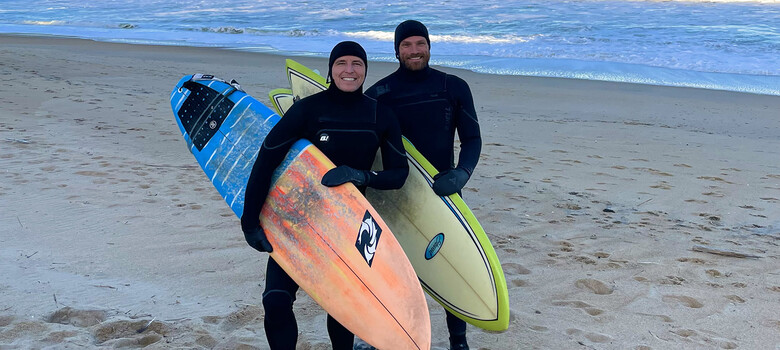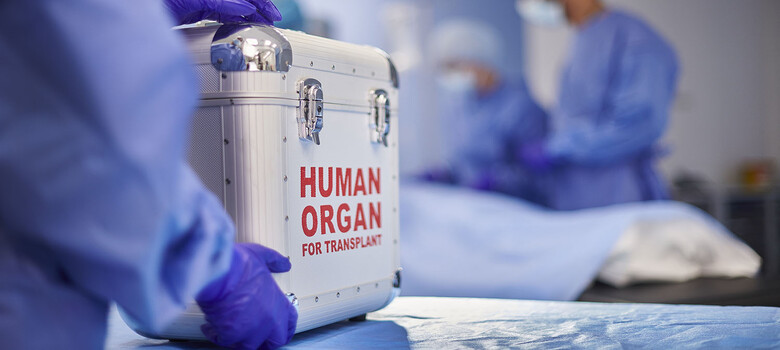Swift Path to Kidney Transplant, After a Decade of Kidney Disease

At age 27, Barb Lavalette learned she had a disease that, over time, could severely damage her kidney function. For more than a decade, she managed her kidney disease and built a life and family. Then her kidneys began to fail rapidly and she was placed on the transplant waitlist at Duke. Fortunately, her wait was shorter than most.
Diagnosis Foretells Kidney Transplant
Lavalette was diagnosed with an aggressive form of IgA nephropathy -- an immune disorder in which the body attacks its own kidneys. Her doctors told her she might slow the disease with medications and diet, but eventually her kidneys would stop working.
That happened 11 years later. “My kidney function went downhill fast, from about 20% to 11% over a month or two,” said the now-42-year-old Raleigh mom of two. “I felt awful: swollen feet, headaches, dizziness, exhaustion.” Her local provider told her it was time to start thinking about dialysis -- and about getting on a transplant waiting list.
Choosing a Kidney Transplant Center
Lavalette and her husband, Cory, began searching for a kidney transplant center -- checking success rates, expertise, and time spent on the waitlist.
Duke Health met their criteria. Its program performs more than 150 kidney transplants a year and ranks in the top 20% for transplant rate nationally. It also has the fastest time from referral to evaluation in the state of North Carolina.
Even more reassuring for Lavalette was that one of her earlier doctors had chosen Duke when he needed organ transplant surgery. “If this wonderful doctor who took great care of me picked Duke for his transplant, that’s where I was going,” she said.
Lavalette’s decision was confirmed when she met Duke nephrologist, Matthew J. Ellis, MD. “Dr. Ellis was full of information, answering all our questions,” she said. “But he asked me questions, too. He was curious how he could best serve me.”
From Workup to Waitlist
Getting on the kidney transplant wait list -- which involves numerous medical tests and evaluations -- took about a month and a half. Lavalette helped things along by staying on top of her appointment scheduling. It’s a process the Duke kidney transplant team has taken steps to streamline.
“We see a lot of referred patients and we see them very quickly,” said Dr. Ellis. “In fact, we try to benchmark it with other transplant centers. From the time we hear about a patient to the time that patient is in clinic is less than a month. We’re definitely the fastest in our region.”
That’s good for patients, Ellis said, because the sooner they get listed, the sooner they can start having potential living donors evaluated.
Months of Donor Evaluations and Dialysis
Lavalette was lucky enough to have several friends and family members step forward with offers to donate kidneys. One by one, they were ruled out -- because they weren’t a match or because they had previously undiagnosed health conditions that would make donation unsafe for them. “A lot of things take people out of the running that I never knew about until I was in that process,” Lavalette said. “I had six people turned away for one reason or another over a year and a half.”
While she waited, Lavalette endured daily dialysis to filter toxins from her blood, a job her kidneys could no longer do. “Since I worked full time and had younger children, I chose to do my dialysis at home -- 10 hours every night,” She said. “I had a catheter put into my stomach area and had a machine I would get hooked up to.” This allowed her to continue working and have a mostly normal life. But the process was onerous, sometimes painful, and kept the busy mom from participating fully in her children’s activities. “My daughter was in softball, and I would have to leave her games early,” she said. “Or my son’s hockey games would start super early in the morning, and I would need to miss them because I needed more time on the machine. It made me sad.”
The Call Arrives
In spring 2017 -- a year and a half after she started dialysis and got on the waitlist -- Lavalette got the call she’ll never forget.
“The Duke transplant coordinators had a possible kidney,” she said. “They asked: ‘Do you have a fever? Is anyone in your house sick right now?’ Those things would make me ineligible for surgery, but that day I had the right answers.”
Duke surgeon Bradley Collins, MD, successfully performed Lavalette’s transplant. In the days that followed, a stream of other care team members came by to give support and information on post-transplant life. “I can’t even count how many people came into my room to make sure I had everything I needed to know before leaving hospital,” she said. “I saw a dietitian and social worker. They had a pharmacist come and show me how to take care of my pill box. They take care of everything.”
That personalized and expert care is a Duke hallmark. “We are patient focused. We provide people what they need,” Dr. Ellis said.
Minimizing Time to Transplant
The National Kidney Foundation estimates the average wait time for a kidney transplant in the U.S. is three to five years -- more in some regions. Patients in Duke’s program typically fare better.
“We get ranked fairly highly -- in the top 20% -- in the speed with which patients get transplanted,” Dr. Ellis said. “I think that’s in part because of how efficiently we get patients on the list and take care of them. But I think it’s also part of how we work up living donors, and how we use deceased donor offers judiciously -- and probably more aggressively -- than other centers.”
A Return to Healthy Life
A year and a half after surgery, Lavalette had a rejection episode -- a serious complication that her Duke transplant coordinator caught early. “We got her in quickly and took care of her -- which is the key to recovery after rejection,” said Dr. Ellis.
That was several months ago. Today, Lavalette feels like her healthy self again. “My kidney function is better now than it was when I was 25,” she said. “I feel like a better parent, better wife, and better everything. I am so very thankful.”





